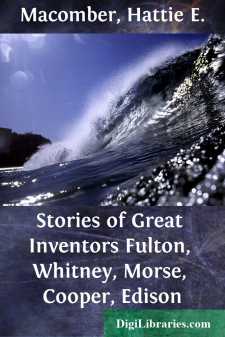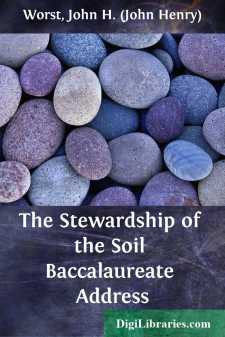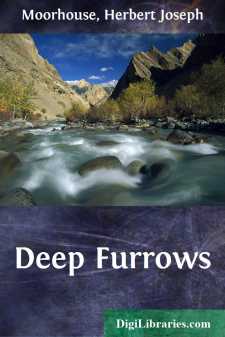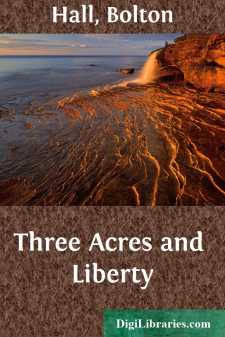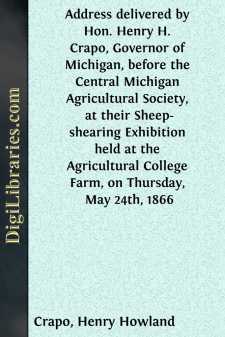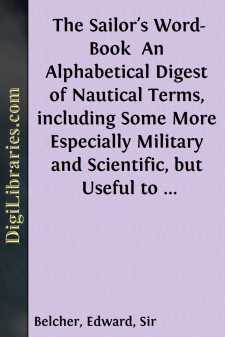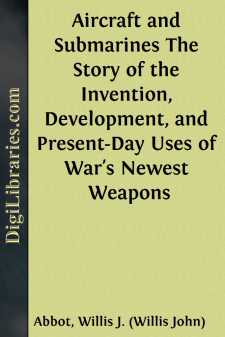Technology & Engineering
Technology & Engineering Books
Sort by:
Robert Fulton. This story is about a giant. Do you believe in them? He peeps out of your coffee cup in the morning. He cheers you upon a cold day in winter. But the boys and girls were not so well acquainted with him a hundred years ago. About that long ago, far to the north and east, a queer boy lived. He sat in his grandmother's kitchen many an hour, watching the tea-kettle. He seemed to be...
more...
Our ambitious young commonwealth, in conjunction with other states comprising the great Northwest, occupies a commanding position in the industrial and economic affairs of this nation. Mines of gold and silver or forests primeval North Dakota does not have; but from the millions of fertile acres comprising our vast agricultural empire, we may reap a golden harvest every year that will exceed in wealth...
more...
FOREWORD Once in awhile, maybe, twenty-five or thirty years ago, they used to pack you off during the holidays for a visit on Somebody's Farm. Have you forgotten? You went with your little round head close clipped till all the scar places showed white and you came back with a mat of sunbleached hair, your face and hands and legs brown as a nut. Probably you treasure recollections of those boyhood...
more...
by:
Bolton Hall
FOREWORD We are not tied to a desk or to a bench; we stay there only because we think we are tied. In Montana I had a horse, which was hobbled every night to keep him from wandering; that is, straps joined by a short chain were put around his forefeet, so that he could only hop. The hobbles were taken off in the morning, but he would still hop until he saw his mate trotting off. This book is intended...
more...
Mr. President, and Members of the "Central Mich. Ag'l Society:" Ladies and Gentlemen: Remote from the theatre of action in the late rebellion, Michigan has experienced comparatively few of the evils that followed immediately in its path. The usual pursuits of peaceful life, were here scarcely disturbed, and by the permission of a Gracious Providence, the industry of the inhabitants of our...
more...
INTRODUCTION Students of economics know that the roundabout methods of capitalistic production are far more fruitful than the direct methods of the primitive economy. As we advance, we introduce new intermediaries between the beginning and the end of production. This thought occurs to one in the study of Americanization. If we would Americanize the immigrant we must seek him out in his daily economic...
more...
THE FRANCO-AMERICAN CORPS It was on a cool, starlit evening, early in September, 1916, that I first met Drew of Massachusetts, and actually began my adventures as a prospective member of the Escadrille Américaine. We had sailed from New York by the same boat, had made our applications for enlistment in the Foreign Legion on the same day, without being aware of each other's existence; and in...
more...
HISTORY OF FARMINGThe Land and the People From the most southern point of Ontario on Lake Erie, near the 42nd parallel of latitude, to Moose Factory on James Bay, the distance is about 750 miles. From the eastern boundary on the Ottawa and St Lawrence Rivers to Kenora at the Manitoba boundary, the distance is about 1000 miles. The area lying within these extremes is about 220,000 square miles. In 1912...
more...
by:
Edward Belcher
CHAPTER I THE EYE OF THE FLEET The fleet of boats and canoes bearing supplies for the far east turned from the Mississippi into the wide mouth of the Ohio, and it seemed, for a time, that they had come into a larger river instead of a tributary. The splendid stream, called by the Indians "The Beautiful River," flowed silently, a huge flood between high banks, and there was not one among the...
more...
INTRODUCTORY It was at Mons in the third week of the Great War. The grey-green German hordes had overwhelmed the greater part of Belgium and were sweeping down into France whose people and military establishment were all unprepared for attack from that quarter. For days the little British army of perhaps 100,000 men, that forlorn hope which the Germans scornfully called "contemptible," but...
more...


